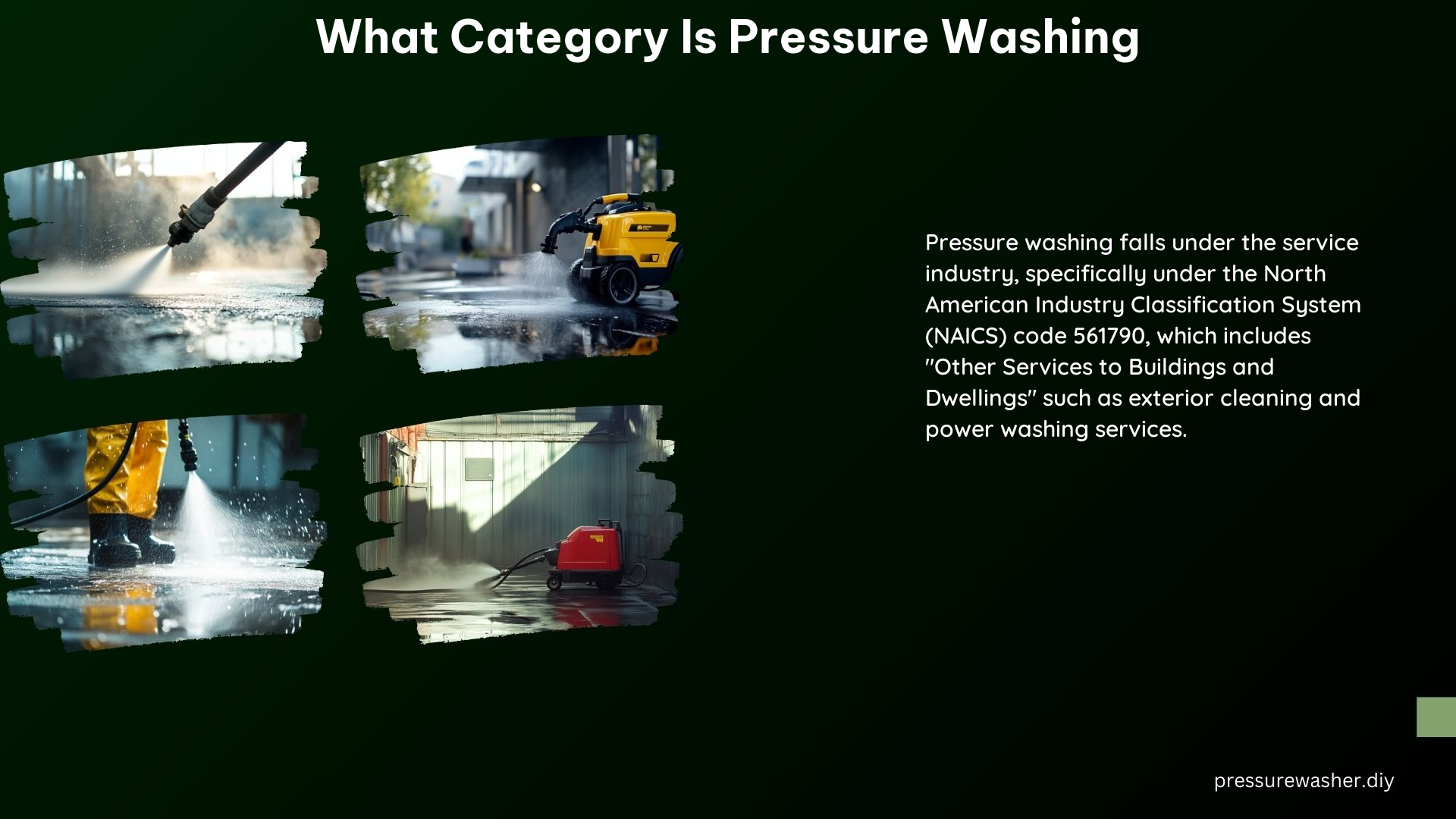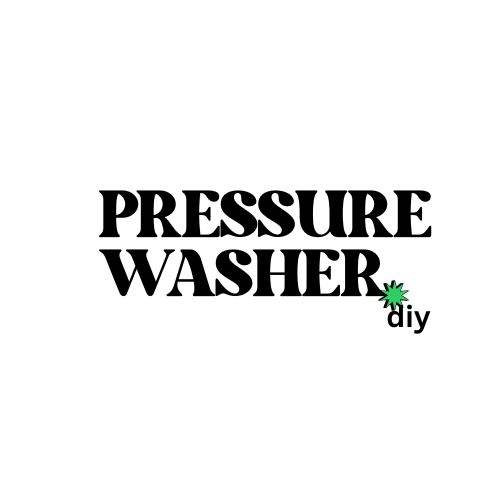Pressure washing, also known as power washing, is a versatile cleaning technique that utilizes high-pressure water to remove dirt, grime, and other unwanted materials from various surfaces. This specialized service falls under the category of “Other Services to Buildings and Dwellings” as defined by the North American Industry Classification System (NAICS) code 561790.
Understanding the NAICS Code 561790
The NAICS code 561790 encompasses a wide range of services related to the maintenance and upkeep of buildings and dwellings. This category includes, but is not limited to, the following services:
-
Exterior Building Cleaning: Pressure washing is a popular method for cleaning the exterior of buildings, including walls, siding, and roofs, to remove accumulated dirt, mildew, and other contaminants.
-
Driveway and Parking Lot Cleaning: Pressure washing is an effective way to clean and maintain the appearance of driveways, parking lots, and other paved surfaces by removing oil stains, tire marks, and accumulated debris.
-
Sidewalk and Walkway Cleaning: Pressure washing can be used to clean and restore the appearance of sidewalks, walkways, and other outdoor paved areas.
-
Graffiti Removal: High-pressure water can be used to remove graffiti from various surfaces, including walls, fences, and other structures.
-
Deck and Patio Cleaning: Pressure washing is a common method for cleaning and restoring the appearance of wooden decks, patios, and other outdoor living spaces.
-
Fence and Railing Cleaning: Pressure washing can be used to clean and maintain the appearance of fences, railings, and other outdoor structures.
-
Playground Equipment Cleaning: Pressure washing is often used to clean and sanitize playground equipment, ensuring a safe and clean environment for children.
-
Boat and RV Cleaning: Pressure washing is a popular method for cleaning the exterior of boats, RVs, and other recreational vehicles.
-
Roof Cleaning: Pressure washing can be used to remove moss, algae, and other contaminants from roofs, improving their appearance and extending their lifespan.
-
Concrete Cleaning: Pressure washing is an effective way to clean and restore the appearance of concrete surfaces, such as driveways, patios, and walkways.
Pressure Washing Equipment and Techniques

Pressure washing equipment typically consists of a high-pressure water pump, a wand or lance, and various nozzles and attachments. The water pressure generated by these machines can range from 1,000 to 4,000 pounds per square inch (PSI), with flow rates ranging from 1 to 4 gallons per minute (GPM).
The specific equipment and techniques used in pressure washing will depend on the surface being cleaned, the level of soiling, and the desired outcome. For example, softer surfaces, such as wood or vinyl, may require lower pressure settings to avoid damage, while harder surfaces, such as concrete or brick, may require higher pressure settings to effectively remove stubborn dirt and grime.
Pressure Washing Safety Considerations
Pressure washing can be a powerful and effective cleaning method, but it also carries inherent risks that must be addressed. Proper safety precautions are essential to prevent injury and ensure the safe and effective use of pressure washing equipment.
Some key safety considerations include:
-
Personal Protective Equipment (PPE): Pressure washing operators should wear appropriate PPE, such as safety goggles, gloves, and slip-resistant footwear, to protect themselves from the high-pressure water and any debris that may be dislodged during the cleaning process.
-
Electrical Safety: Pressure washing equipment often involves the use of electrical components, such as pumps and motors. Proper grounding and the use of ground-fault circuit interrupters (GFCIs) are essential to prevent the risk of electric shock.
-
Slip and Fall Hazards: The water used in pressure washing can create slippery conditions, increasing the risk of falls. Operators should take precautions to ensure the work area is free of obstacles and that proper signage is in place to warn others of the potential hazard.
-
Noise Exposure: Pressure washing equipment can generate high levels of noise, which can pose a risk to the operator’s hearing. The use of appropriate hearing protection, such as earplugs or earmuffs, is recommended.
-
Chemical Exposure: Some pressure washing applications may involve the use of cleaning agents or chemicals, which can pose health and environmental risks if not handled properly. Operators should follow the manufacturer’s instructions and use appropriate PPE to minimize exposure.
-
Damage to Surfaces: Improper use of pressure washing equipment can damage delicate surfaces, such as wood, paint, or soft materials. Operators should carefully select the appropriate nozzle, pressure, and technique to avoid causing unintended damage.
Pressure Washing Regulations and Certifications
The pressure washing industry is subject to various regulations and certifications that ensure the safety and quality of the services provided. Some of the key regulatory bodies and certifications include:
-
Occupational Safety and Health Administration (OSHA): OSHA sets standards and regulations for workplace safety, including the use of pressure washing equipment.
-
Environmental Protection Agency (EPA): The EPA regulates the use and disposal of chemicals and wastewater generated during pressure washing activities to minimize environmental impact.
-
Pressure Washing Resource Association (PWRA): The PWRA is a professional organization that provides training, certification, and industry standards for pressure washing professionals.
-
Certified Pressure Washing Technician (CPWT): The CPWT certification is a recognized credential that demonstrates an individual’s knowledge and expertise in the safe and effective use of pressure washing equipment and techniques.
-
Certified Pressure Washing Operator (CPWO): The CPWO certification is another industry-recognized credential that focuses on the operational aspects of pressure washing, including equipment maintenance, safety protocols, and best practices.
By understanding the regulatory landscape and seeking appropriate certifications, pressure washing professionals can ensure they are providing high-quality, safe, and compliant services to their clients.
Conclusion
Pressure washing is a versatile and effective cleaning technique that falls under the “Other Services to Buildings and Dwellings” category as defined by the NAICS code 561790. This category encompasses a wide range of services related to the maintenance and upkeep of buildings, dwellings, and outdoor spaces.
Pressure washing equipment and techniques must be carefully selected and applied to ensure the safe and effective cleaning of various surfaces, while also considering the potential risks and regulatory requirements. By understanding the technical details and best practices of pressure washing, professionals in this industry can provide high-quality services that meet the needs of their clients and comply with industry standards and regulations.
Reference:
– North American Industry Classification System (NAICS) Code 561790
– Occupational Safety and Health Administration (OSHA) Standards
– Environmental Protection Agency (EPA) Regulations
– Pressure Washing Resource Association (PWRA)
– Certified Pressure Washing Technician (CPWT) Certification
– Certified Pressure Washing Operator (CPWO) Certification
